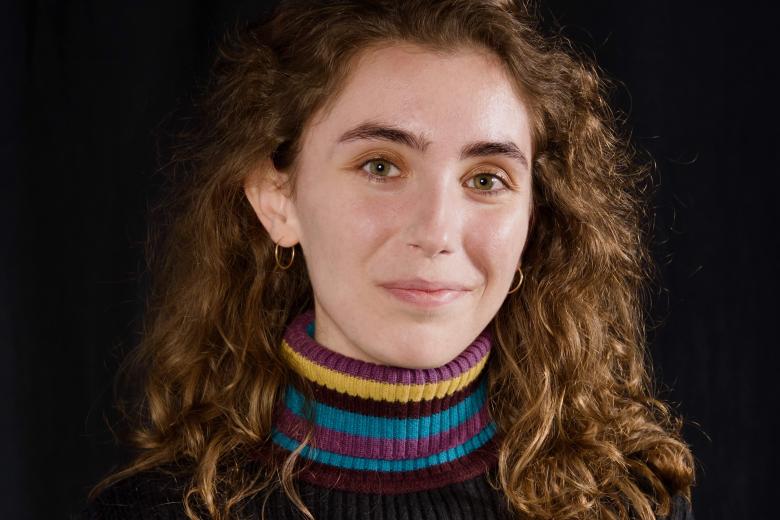Everyone needs a bank. Including human traffickers.
Every October 18, the EU marks its Anti-Trafficking Day, a day dedicated to raising awareness for human trafficking and its impact on victims and societies. In this blog – which draws from our article recently published in the 76th special edition of Cahiers Politiestudies exploring the financial side of crime – we adopt a dual legal-sociological lens to explore how this hidden offense can be made more visible. We make the case for law enforcement and banks to proactively join forces, while highlighting some of the tensions that can arise in such partnerships and the need to address them explicitly if these initiatives are to reach their full potential.
Our PhD research is part of the COMCRIM project, which brings together 22 partners from the Dutch public and private sectors, including banks, NGOs, the Police, and the Labour Inspectorate. COMCRIM uses various methods for the purpose of improving the detection of victims of human trafficking when it is linked to money laundering and corruption. We also examine whether these crimes have the potential to undermine rule-of-law governed democracies like the Netherlands. Alexandrah Bakker takes a socio-legal perspective to study how Dutch criminal does, can, and ought to respond to this phenomenon including by developing, together with experts, (financial) indicators and crime scripts. Marie Gabenisch adopts a criminological perspective and conducts an ethnographic study, including interviews and participatory observations with anti-trafficking experts, as well as victims, perpetrators, and facilitators of human trafficking.
Hidden in Plain Sight
Human trafficking is both a human rights violation and a criminal offense. Its primary characteristic is the exploitation of a victim, whether this be sexual, labour, or criminal exploitation. As a human rights violation, states (as public actors) have a responsibility to identify, protect, and support victims, whereas banks (as private actors) have due diligence obligations to limit the risk of potential violations within their own operations and those of their clients. As a crime, the state has the mandate to investigate human trafficking, whereas banks must not commit, facilitate, or profit from it.
Yet both in the Netherlands and worldwide, human trafficking remains under-reported, under-detected, and under-prosecuted. There are many reasons for this. Due to trauma, fear, guilt, or a lack of self-identification, victims are often reluctant to cooperate with authorities, even though this may mean sacrificing access to compensation and other protections. At the same time, criminal cases rely heavily on victims’ testimonies; without these, cases often stagnate. In the Netherlands, human trafficking is frequently described as an offense that authorities must actively ‘retrieve’ (a haaldelict), rather than one that is ’brought’ to them (a brengdelict). With capacity being limited and stretched between competing priorities, many potential cases remain in the shadows.
The Financial Side of Human Trafficking
Many of these challenges stem, in part, from the misconception that human trafficking always happens as an isolated, one-on-one offense between a single perpetrator and a single victim. In reality, human trafficking is a highly lucrative enterprise that often operates scale, generating substantial proceeds that must be laundered to become usable.
And nowadays, everyone needs a bank. Including human traffickers.
A number of recent global crises – from the War on Drugs to the Watergate scandal and the post-9/11 fight against terrorism – have led to a shift in banks’ societal role. No longer purely profit-driven entities, banks have become gatekeepers of the lawful financial system with a dual private-public identity. Anti-money laundering (AML) legislation requires banks to investigate customers and monitor their transactions.
Banks therefore hold a wealth of personal and transactional information, including where people shop, but potentially also who they exploit and how. If they detect an unusual transaction, this must be reported to the Financial Intelligence Unit (FIU), who can label them ‘suspicious’ and initiate a criminal investigation.
Navigating Points of Contention
This framework creates opportunities to detect not only money laundering but also its predicate offenses – i.e. those from which the laundered funds originate – like human trafficking. However, it also brings challenges.
Banks are the first link in a chain involving the FIU, law enforcement, and public prosecutors. In the AML framework described above, their relationship with these actors is often asymmetrical and one-directional, while the threat of sanction for non-compliance hangs over their heads. In their dual public-private role, banks must try to reconcile their public gatekeeping role with their private profit-making one. Both banks and the state have to navigate concerns about privacy, possible discrimination, reputation, and legitimacy.
Still, experiences from voluntary collaborations like the Fintell Alliance show that banks want to do more than the bare minimum, acting also as driving forces in detecting financial economic crime. Public-private partnerships make it possible to make use of this legal framework and take detection from a box-ticking exercise to a more collaborative effort. In this way, banks and law enforcement can leverage their respective strengths. At the same time, parties can ensure they respect their mandates and openly address possible points of contention to avoid that they hinder collaboration altogether.
We argue that banks and law enforcement agencies have everything to gain from cooperating in the fight against human trafficking. We explore these opportunities and potential points of contention further in our article in Cahiers Politiestudies. This Anti-Trafficking Day, we, also on behalf of COMCRIM, invite policymakers, financial institutions, and researchers to continue efforts to transform financial data into a tool to make the still largely invisible crime of human trafficking visible.
A. Bakker
Alexandrah began her PhD in Criminal Law at Maastricht University in September 2024. She is conducting socio-legal research into crimes that undermine democracy and the rule of law in and via the Netherlands (ondermijning).

M. Gabenisch
Marie Gabenisch is a PhD Candidate in Criminology at Maastricht University. She conducts research as part of COMCRIM, an innovative, public-private and interdisciplinary project, aimed at detecting organised crime in unconventional data sources such as banking records, follow the money and discern criminal networks.

-
Overriding Mandatory Rules in International Arbitration: Balancing Business Freedom and State Interests
Imagine two companies from different countries enter a business deal. They pick a neutral country’s law to govern their contract and agree to arbitrate any disputes, thinking they can sidestep each other’s national courts. But what if one country’s law absolutely prohibits something in the deal –...

-
What is coercion?
According to classic economic thinking—and to common sense—if two parties agree to a deal, both are made better off, otherwise they would not have agreed. This idea is also reflected in contract law, at least in its basic form, treats consent as the cornerstone of a valid contract. If both sides say...

-
Should Employees Participate in Corporations? A Law and Economics Perspective.
When we speak of corporations, we usually think of shareholders and managers: the former provide capital, the latter make decisions. Yet, without the contributions of its employees, no corporation can survive, let alone thrive. In my PhD thesis, I answered the question of how employee participation...
